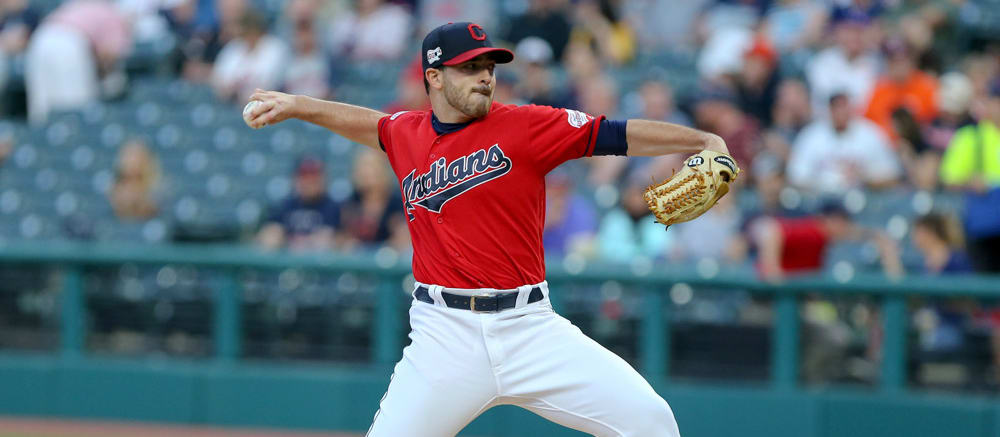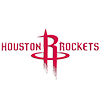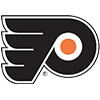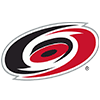During the season, I'm going to look at some of the players being dropped by fantasy managers to see if their decisions were a little brash. Especially this early in the season with player evaluations up in the air, some of the players dropped will provide fantasy value going forward. Someone who will remain nameless decided it was a good idea to drop Robbie Ray and Tyler O'Neill last year in the first couple of weeks.
The players I'm looking at this week are a mix of immediate adds and those who are just a tweak or two away from taking a step forward.
For the information, I'm going to focus on players dropped at the NFBC and CBS. Both Yahoo and Fantrax's add and drop numbers are based on the past day or so and can be dominated by streaming starters. CBS and NFBC are based on the past week.
As a general rule, I will stay away from injured players and just focus on players expected to play.
Hitters
Mike Moustakas (145 NFBC drops, -5% at CBS)
The 33–year-old third baseman might just be done. He's known for having power and a decent eye at the plate. Neither has shown up this season. The decline is possibly tied to playing through a biceps injury.
He has only four hits this year and none of them have gone for extra bases. Additionally, his average exit velocity is down over two miles per hour from last season and down
During the season, I'm going to look at some of the players being dropped by fantasy managers to see if their decisions were a little brash. Especially this early in the season with player evaluations up in the air, some of the players dropped will provide fantasy value going forward. Someone who will remain nameless decided it was a good idea to drop Robbie Ray and Tyler O'Neill last year in the first couple of weeks.
The players I'm looking at this week are a mix of immediate adds and those who are just a tweak or two away from taking a step forward.
For the information, I'm going to focus on players dropped at the NFBC and CBS. Both Yahoo and Fantrax's add and drop numbers are based on the past day or so and can be dominated by streaming starters. CBS and NFBC are based on the past week.
As a general rule, I will stay away from injured players and just focus on players expected to play.
Hitters
Mike Moustakas (145 NFBC drops, -5% at CBS)
The 33–year-old third baseman might just be done. He's known for having power and a decent eye at the plate. Neither has shown up this season. The decline is possibly tied to playing through a biceps injury.
He has only four hits this year and none of them have gone for extra bases. Additionally, his average exit velocity is down over two miles per hour from last season and down almost seven mph from his peak in 2016. His max exit velocity has not gotten within four mph of last season's max. Not good.
For his career, he's had roughly a 7% BB% and 16% K%. So far this season, his walk rate is down to… well nothing with no walks. The strikeouts are up to 41%. Some decline was expected but this career-ending bad.
Normally, I'd not recommend adding anyone hitting like this, but the biceps injury could have been dragging him down. There is a chance he could rebound to being a hitter with a .250 average and 20-30 homers. In deeper leagues, this profile has value. The key will be to monitor his performance once he returns from the IL.
Yoshi Tsutsugo (78 NFBC drops, -1%)
Tsutsugo started the offseason as a relative unknown, but once fantasy managers started digging in, his stock soared up. While he bounced around to several teams, he settled with the Pirates and hit .268/.347/.535 with eight homers in 144 PA. The hope of continued production and dual-position qualification (1B and OF) had him climbing up draft boards. So what has changed?
First, his eye hasn't gotten worse, and it's possibly a bit better. Part of his breakout was an improved plate discipline. His walk rate is back up to 14% and his strikeout rate down to a career-low 26%.
Additionally, some of his power metrics are staying constant. His average exit velocity is within one mph. His hard-hit rate is constant (36% vs 34%).
The problem is that he's not contacting the ball correctly in order to turn those hard-hit balls into home runs. His groundball rate is up from 37% to 43%. This change is confirmed with his average launch angle dropping from 19% to 10%. Also, his pulled ball rate has dropped from 36% to 23%. He's only been able to "barrel" one ball this year.
With other options becoming available, I'm fine with the drop, but monitor his two-week power production to see if he starts getting to his power. The late start might be affecting him or he could be hiding an injury.
Cesar Hernandez (75 NFBC drops, -2% at CBS)
Hernandez's results have not shown any signs of his 15-20 homer power. Out of his 15 hits, only four have been extra-base hits, all doubles. Looking a little deeper: nothing has changed and he seems to be on an "unlucky" streak.
While his walk rate is down (9% to 3%), so is his strike-out rate (21% to 19%). All of his batted-ball metrics are almost identical. His groundball rate is 47% versus 48%. His average launch angle is exactly the same at 10.7 degrees. His pull rate is almost identical at 40%. His Statcast hard-hit rate is 33% vs 35%. This season's 110.8 maxEV is a career best.
The Nationals don't seem worried about him since he's started in every game so far and led off in all but one. He's tied for first in the league with 80 plate appearances.
I feel he's an acceptable injury replacement, and in deep enough leagues, a nice accumulator. He's one of those players who will be constantly added and dropped during the season.
Starters
Carlos Hernandez (112 NFBC drops, -4% at CBS)
I never understood the hype around Hernandez coming into the season and wrote about him here at RotoWire. Simply put, he was great as a reliever and horrible as a starter. The key was looking past his ERA.
As a starter, he had a 3.55 ERA and a 3.95 ERA as a reliever. But that is where the advantage ends. As a reliever, he had an 11.9 K/9 and 4.9 BB/9. They were 5.9 K/9 and 4.0 BB/9 as a starter. Put another way, his K-BB% dropped from 18% to 5% when he went from relieving to starting.
Additionally, his xFIP jumped from 4.10 to 5.42. The xFIP is almost identical to this season's 5.37. And he has a 6.43 ERA in 14 innings. His strikeout and walk numbers are identical at 3.2 per nine innings. It has been just ugly.
Those who rostered Hernandez with hopes of a sub-4.00 ERA broke two of the rules I follow.
First, evaluate pitchers who stared and relieved as having two separate skill sets. Sometimes there isn't much of a difference and other times the difference can be huge (see Jorge Lopez in Baltimore).
Second, completely ignore ERA in all pitcher evaluations. Start with strikeouts, walks and batted-ball metrics and build up a pitcher's valuation from there. A pitcher's ERA is possibly the noisiest stat and I find too many bad decisions are based on it.
Aaron Civale (90 NFBC drops, -10% at CBS)
It's been ugly for Civale this season with a 9.58 ERA and 1.94 WHIP. As I just wrote, decisions can't be based on ERA, so it's time to dig a little deeper. While he might not deserve an ERA near 10, his profile is down in several ways.
First, his average fastball velocity is off from 91.6 mph last season to 90.2 mph this season. This drop is not that important as he backed off its usage and is throwing mainly sliders (15% SwStr%, 15% GB%) and curveballs (17% SwStr%, 25% GB%). He's thrown these two pitches a combined 58% of the time. Of the other five pitches he's thrown (major violation of the Yu Darvish Rule), not a single one has generated a swing-and-miss.
Basically, he's hoping for a strikeout (9.6 K/9, a career-high) or batters are laying off the breaking balls (4.4 BB/9, another career-high) or hitting a home run (1.7 HR/9, yet another career-high). The home runs make sense considering his 26% groundball rate.
With his current profile, dropping him is reasonable. It seems like a decent starter could materialize this season with the right pitch combination. Follow his walk rate to see if there is any hope for a rebound. At their current level, they make his WHIP unrosterable.
Drew Rasmussen (63 NFBC drops, -9% at CBS)
Some smart people and robots were in on Rasmussen this preseason and I never understood why. The Rays planned on using him as a starter, and like Hernandez, he's not been good as a starter.
In his 10 starts, he had a 2.67 ERA (again, ignore ERA) but a 3.92 xFIP and just a 6.2 K/9 to go with a 1.7 BB/9. That's basically the 2021 version of Zack Greinke (6.3 K/9, 1.9 BB/9, 4.21 xFIP). In all the NFBC drafts, Rasmussen had a 280 ADP while Greinke was going forty picks later.
I expected a starter with a 4.00 ERA and he's delivered with a 4.19 xFIP and 4.13 SIERA. Additionally, the strikeouts (6.8 K/9) and walks (2.3 BB/9) are almost identical to his 2021 starting stats.
A 1.50 HR/9 has boosted up his ERA into the 5.00s, but I see him as a buying opportunity in deep leagues where a pitcher with a low-4.00s ERA is rosterable.
Relievers
Chad Green (99 NFBC drops, -4% at CBS)
Green was one of the highest non-closing relievers drafted (436 ADP) and he's been a disaster this season. In seven innings, his average fastball velocity is down 1.3 mph. This might have killed his strikeout rate (10.7 K/9 to 6.1 K/9) and made him a little more hittable (.360 BABIP). Simply, he's just not missing bats, with his Contact% up from 71% to 77%.
Additionally, he's doubled his walk rate from last season (1.8 BB/9 to 3.7 BB/9). A non-closing reliever with roughly a 6% K%-BB%.
He could quickly turn it around and I'd closely be monitoring his fastball velocity and the walks for the first signs.
Devin Williams (76 NFBC drops, -2% at CBS)
Williams might have been considered the game's best reliever, but he's having issues finding the strike zone with an 11.4 BB/9. Those walks, along with a .538 BABIP, have his WHIP up to 2.37. While his 5.68 ERA is not desirable, it's the WHIP that would have me benching/dropping him. He's only allowed runs in two of his eight appearances but has walked someone in five of those eight appearances.
Williams and Green are perfect examples of why I'll never draft a middle reliever who isn't vying for at least a part of a closer's role. It's tough to find relievers who remain consistent from season-to-season. Once the season starts, they are the most available options on the waiver wire, so why spend draft resources on them? Middle relievers should be streamed based on their talent and the chance of multiple appearances in the upcoming week.




































